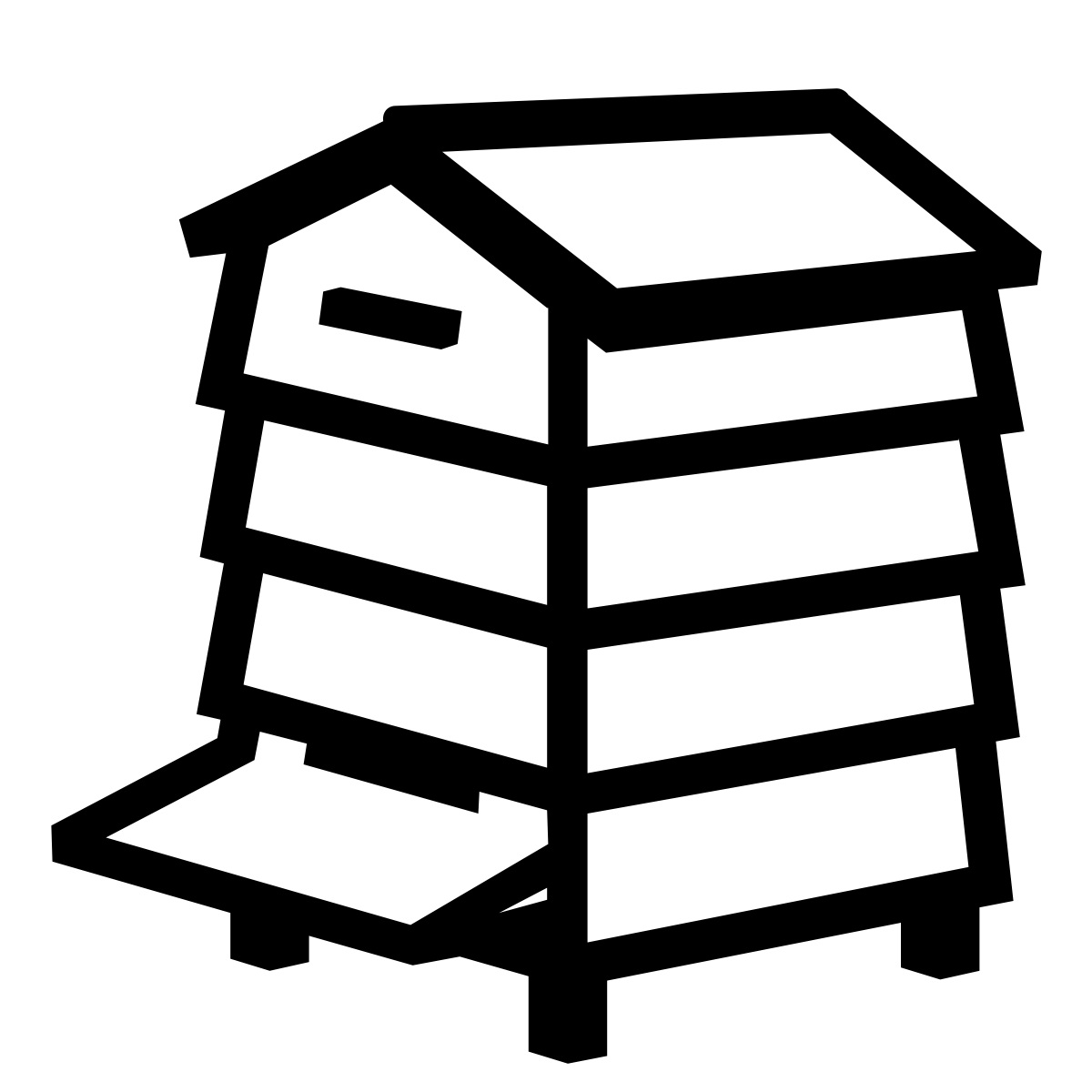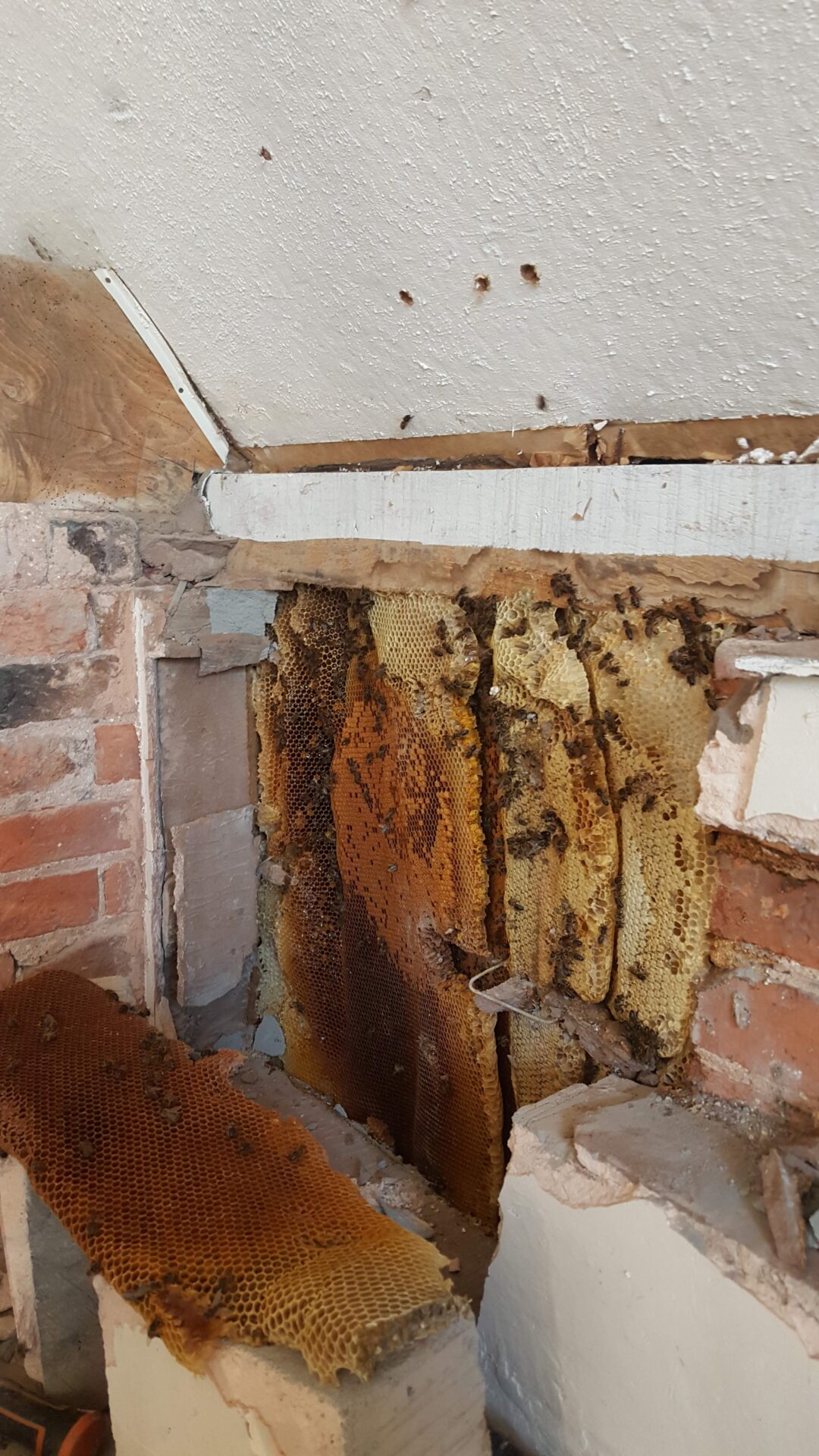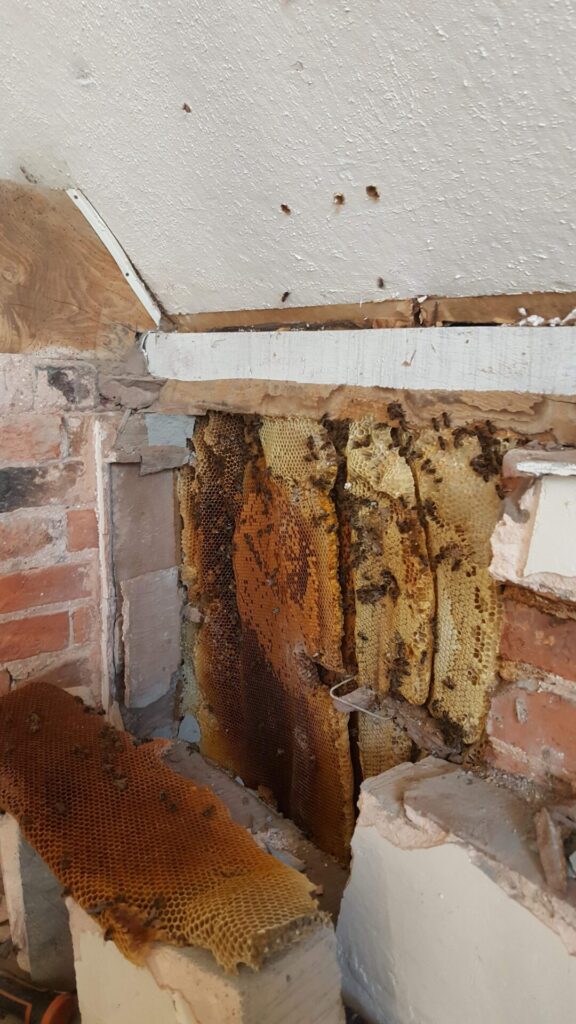
The Early Days.
My bee buddy Cynthia and I have been removing bees from tricky places together for a while. We’ve improved our technique in recent years with good success, but our first attempts didn’t go that well. I could elaborate on what went wrong but instead I’ll share that the main problem was lack of prior planning. One of our party could have won a prize for the highland fling dancing competition at the Braemar Games on one occasion. The beekeeper gave an epic performance, with furious bees trapped inside both trouser legs, on the upstairs landing of a local politician’s elegant home. I still have visions of 4 of us squelching over a honey sodden carpet as copious sticky honey leaked out of the loft, closely followed by very angry bees. Why did we not see this coming! The experience put one member of the group off going near bees for a very long time. I’m pleased to report that this person is showing a lot of beekeeping potential seven years on.
https://www.braemargathering.org/
I’ve learned a lot of beekeeping skills the hard way without a mentor, and this can be hard on the bees too. I was excited to meet a professional bee removal expert a couple of years ago, and to join his recently set up Facebook group (UK Bee Removers) where I can learn from the pros. Clive kindly agreed to share his knowledge and expertise with us in this guest blog, and I really appreciate it because I think that the more knowledge we have the better we can care for honey bees. Clive’s blog backs up my belief that beginners shouldn’t attempt bee removals without expert support.
Clive Stewart.
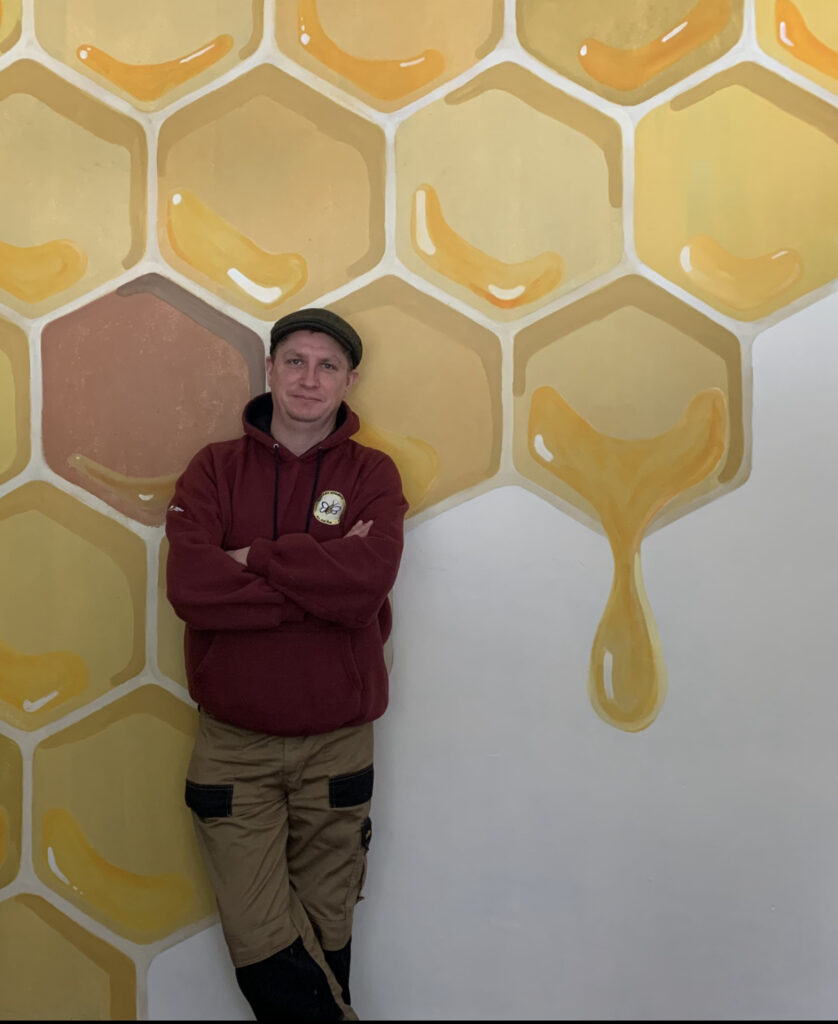
Hello, my name is Clive Stewart and I own and run the company Westart Apiaries, https://www.westart-apiaries.co.uk/ .We are primarily a bee removal company, providing subcontract removals, and training for the pest control industry We also produce hive products, which we sell locally. I have been deeply involved in feral honey bee removal work for the UK pest control industry for the last ten years. I’ve recently been responsible for the creation of the Facebook group UK Bee Removers (UKBR). The group was put together to help bring together beekeepers and pest controllers, who carry out feral honey bee removal work, in order to improve removal techniques, operator safety and bee welfare. It has also been a great source of information for the public, and as helped a number of people in difficulty.
I have been keeping bees for some twenty years or so, and currently run approximately forty colonies throughout the county of Staffordshire. Since leaving school in 1988, I have gained various qualifications through training and working in; wildlife management, agriculture, horticulture, and pest control industries. All of these sectors have given me sound foundation for the work that I specialise in today.
How It All Started.
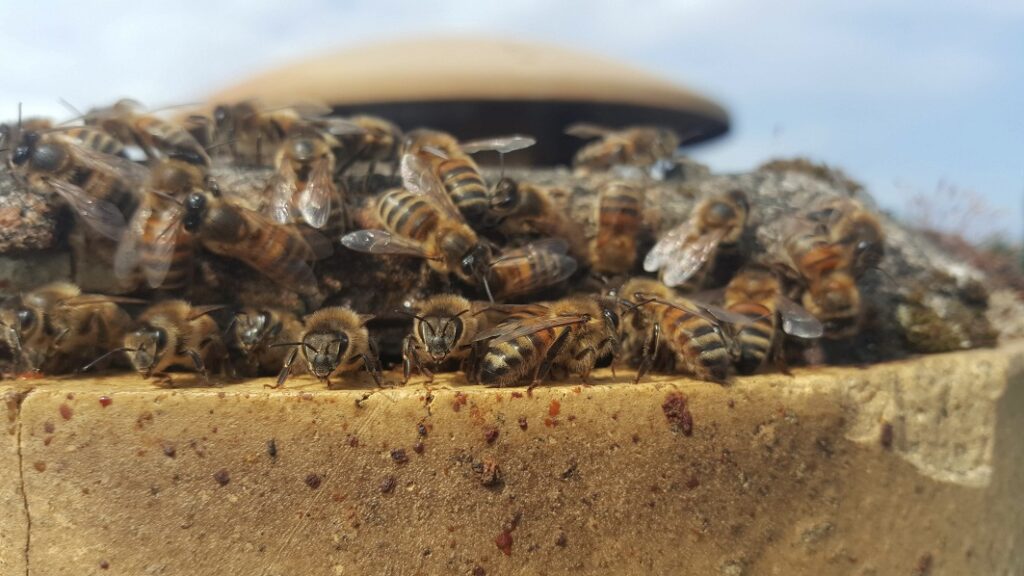
As a child, I had a fond fascination with nature and my first encounter with bees was at around the age of seven or eight. I trapped and caught a large bumble bee under a Frisbee whilst playing with my brother out on the sports fields that backed on to our house. I’m not exactly sure what I thought I was going to do with it at the time. I remember it being my brother’s Frisbee, and that he wanted it back, but he was somewhat frightened to pick it up knowing what I had done, as was I. With tears running down his face he went off and told our father of the situation. He was a strict man who had no tolerance for foolish behaviour. I recall trying to run from the situation when he arrived. I soon learned a valuable lesson in physics that day; no matter how quick you think you may be able to run when you’re little, longer legs can cover more ground even quicker. I was swiftly retrieved from the half way line of the football pitch where we were playing, and escorted back to the Frisbee by the scruff of my shirt, where a very annoyed, and very loud bumble bee could be heard humming away underneath. Forced to let the poor thing go I prepared myself for the consequences……. I always look back on this, and it amazes me how life has turned out. It wouldn’t be for many more years to come after this, and many more bee experiences that I would take up beekeeping, and do the things that I do today.
Pest Control.
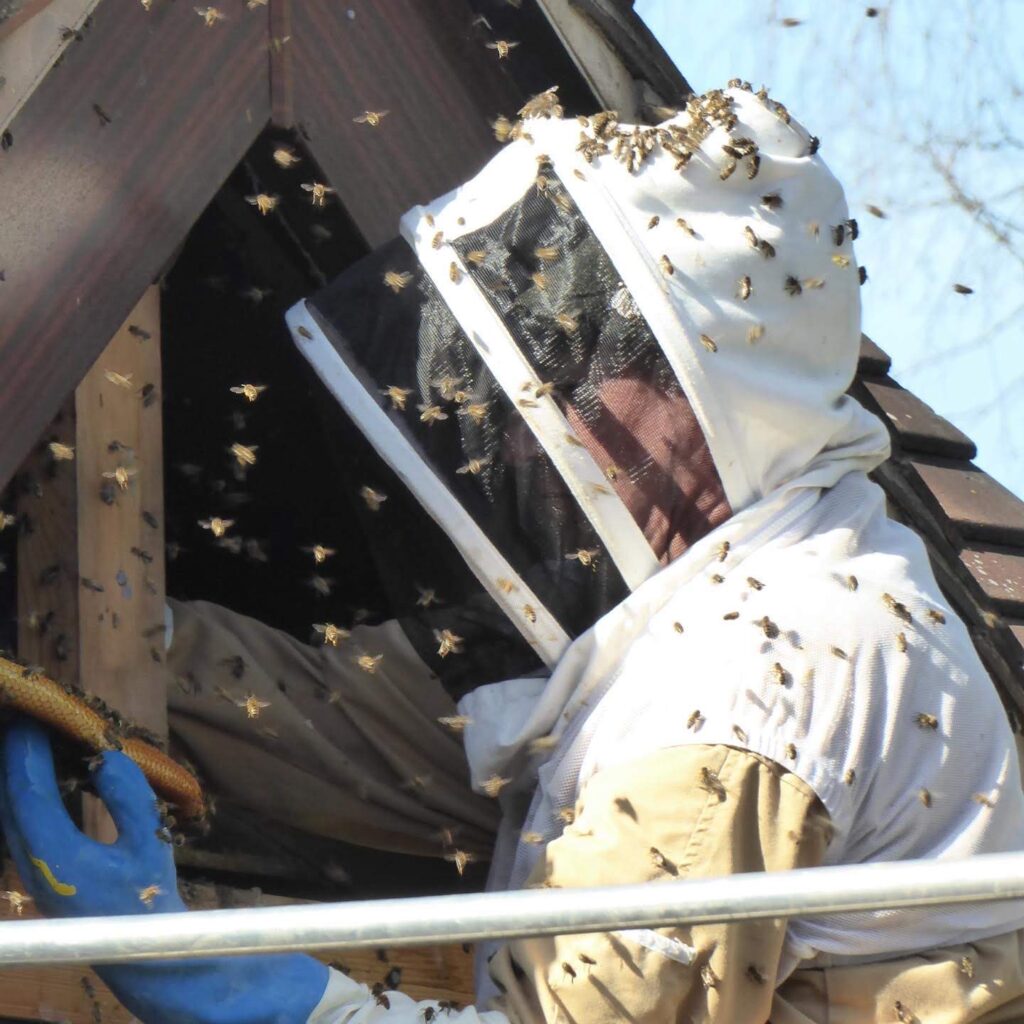
Working in pest control has been an experience. The biggest problem for pest controllers is their clients, and it’s not helped by the modern “must have it now” attitude. We are all guilty of it to a degree, myself included. This is where we hit a button, and expect it to happen. Most people think that pest control is all about killing. When in fact I would spend more time explaining why they had a problem in the first place, and how best to solve it without killing, than I did actually doing the deed. Pests don’t just turn up for the sake of turning up. You will generally, and unknowingly have provided them with two of four things that they need to make your home theirs. Food, water, somewhere to sleep and/or breed, provide any of these, and you will potentially have yourself a pest problem. In the case of honey bees, we provide them with somewhere to store food, and raise their young. These places are usually spacious and well insulated.
Our homes make fantastic hives. Mellissophobia or also known as Apiphobia (fear of bees, and bee stings) is quite common, and does contribute to people becoming alarmed and distressed. Most people are quite understanding when lifecycles and situations of various species of bee are explained. Honey bees however, are more difficult to deal with these days. It’s no longer a simple case of just applying an insecticide. There are currently no products specifically for the use of “established colonies”. Whilst government bodies recommend products with certain phrases these are widely recognised as not generally suitable for the purpose, and are surrounded by follow up recommendations that should be followed by law. However, they are not conclusive to the chemicals action, or its operation. Therefore, pest control companies are now either undergoing training themselves, or employing the help of beekeepers, to carry out more humane methods to resolve feral honey bee issues.
Honey Bee Removal.

Honey bee removal work is by no means new, and it’s been carried out since people began documenting their actions on the walls of their homes. Caves in Spain depict a person collecting honey from a hole or crevice in a cliff face. There are also medieval drawings illustrating people collecting bees from holes in trees. Granted, the people in these situations may not have been in it for the same reasons I and many others do it today, but it highlights that there is history to its beginnings.
The Cut Out.
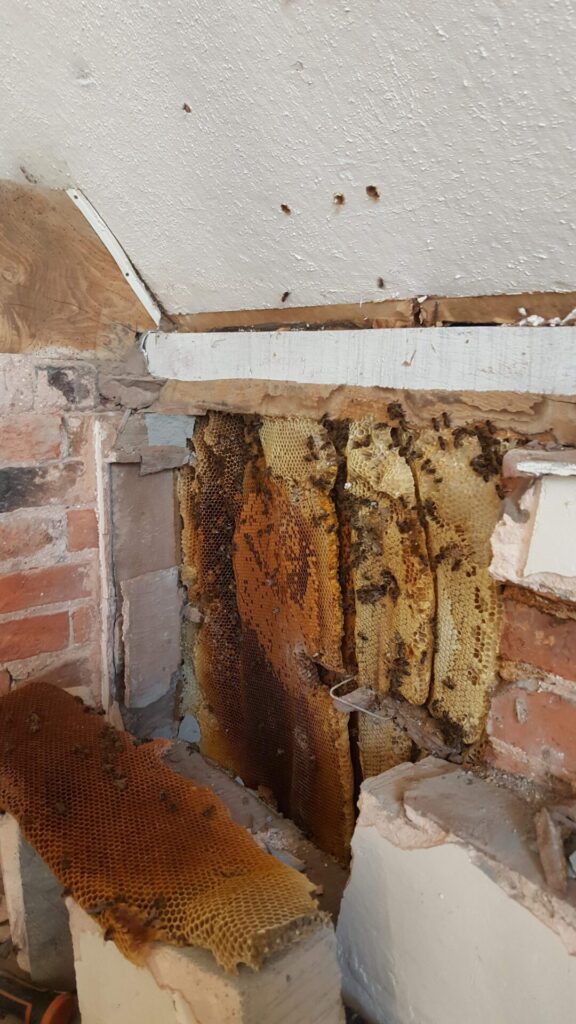
Today there are mainly two types of removal used to relocate colonies of Honey bees. The most common, and it’s to do with the “must have now” attitude, is the cut out. This is where a colony is opened up and exposed so that it can be removed comb by comb. It usually requires the taking apart of a building be it some plaster board or roof tiles, or even brickwork to get to the heart of the colony. The combs are carefully cut out and are placed into frames, secured using elastic bands, or wire. It’s generally the quickest, and simplest way of dealing with a colony. Bee vacuums are sometimes used to assist in the collection of the colony, and round up the stragglers. The other well-known method, is the trap out. Whilst this is considered to be less invasive method of removal, it is notoriously time consuming, and not always successful. It is also seasonal, and not a method recommended for out of season removal scenarios.
The Trap Out.
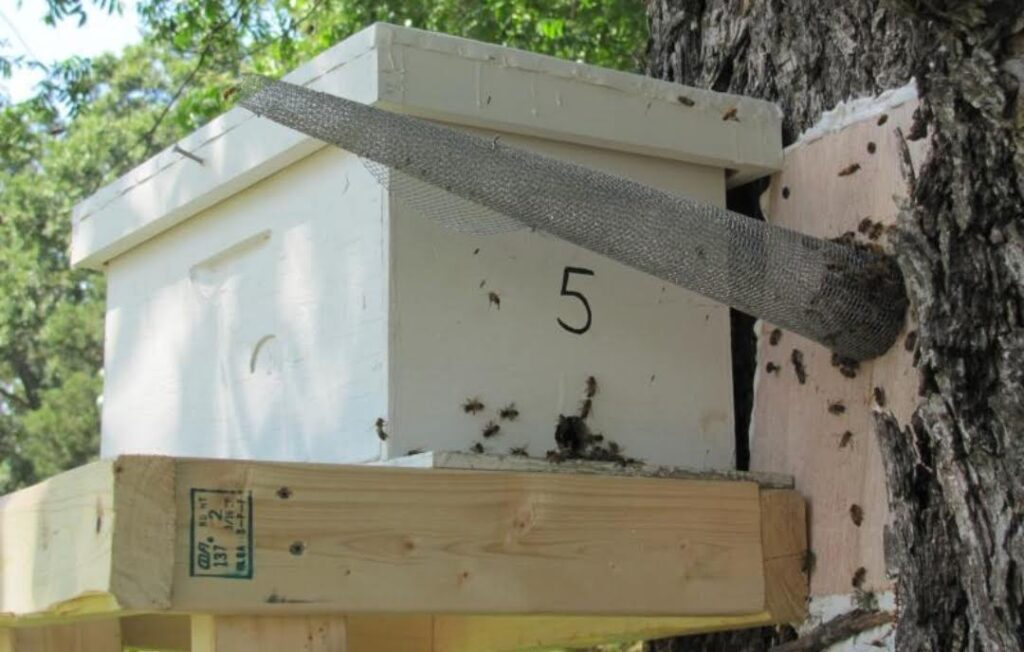
To carry out a trap out, the entrance of the colony is blocked off with the use of a wire gauze funnel facing outwards. This allows the bees to exit the colony but disorientates them on their return, where they try to get back in at the base of the cone. A surrogate colony is sited close to the entrance, usually of limited numbers and a small quantity of brood so that the foragers from original colony have somewhere to go. Over a number of weeks, as the colony is slowly bled of its bees from the original location, the surrogate colony can be moved to a more suitable, and permanent position. This method is well documented in this short YouTube video.
Beginners Be Warned.
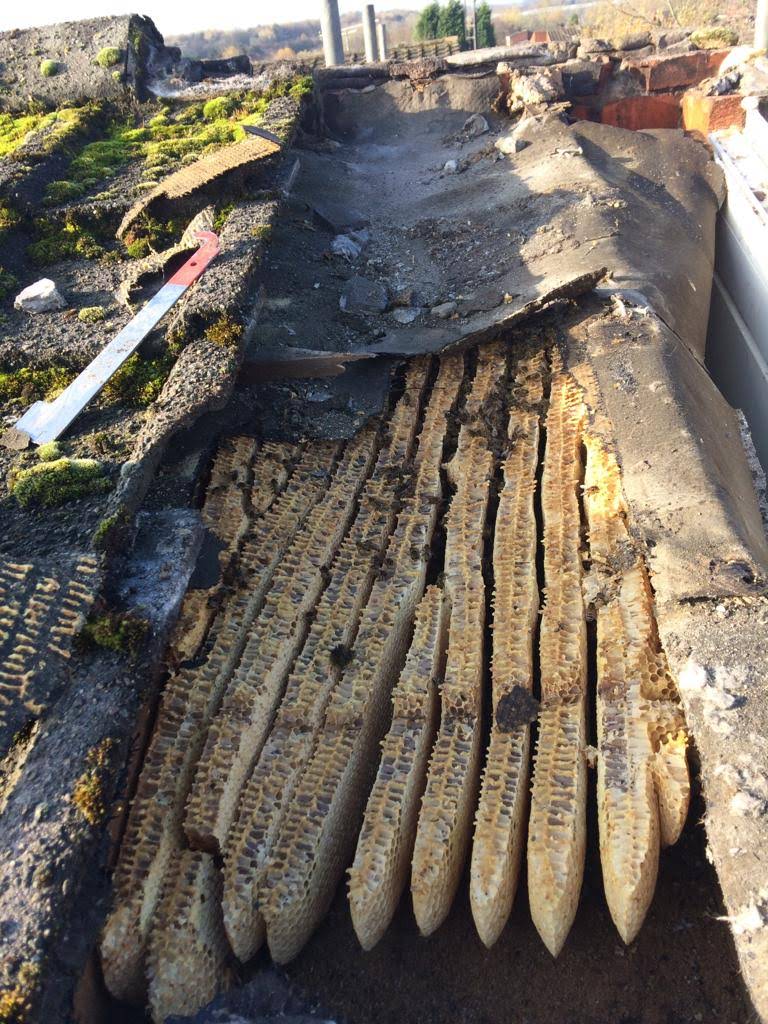
I should comment here that beekeeping beginners should not consider bees from removals for their first hive. Firstly, they are not as free as one might think them to be, when costs and time are taken in to consideration. Secondly, the bees from them will require a great deal of knowledge in nursing them back to health. The down side to these operations is that because most are at height, and tucked up in the fabric of the building there is a cost involved if they are to be done correctly. Access equipment in the form of scaffold or cherry pickers can be expensive. It is sometimes possible, to do an extraction from inside. This can be safer and sometimes less costly. However, it must be remembered that there can be a considerable amount of honey within the colony, and that it gets very messy. Lots of preparation has to be implemented before works can begin.
Preparation & Planning.
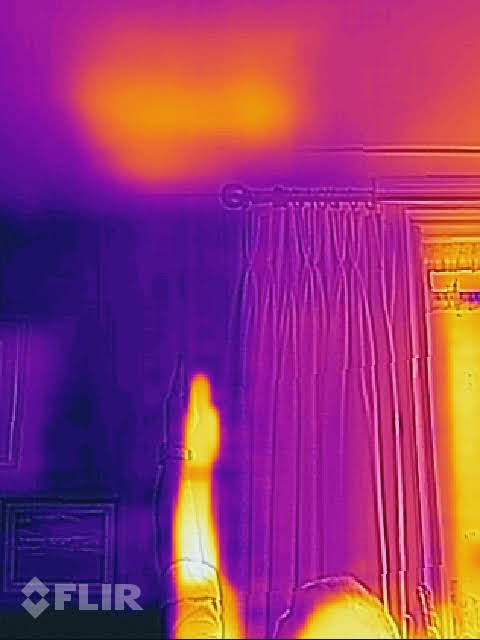
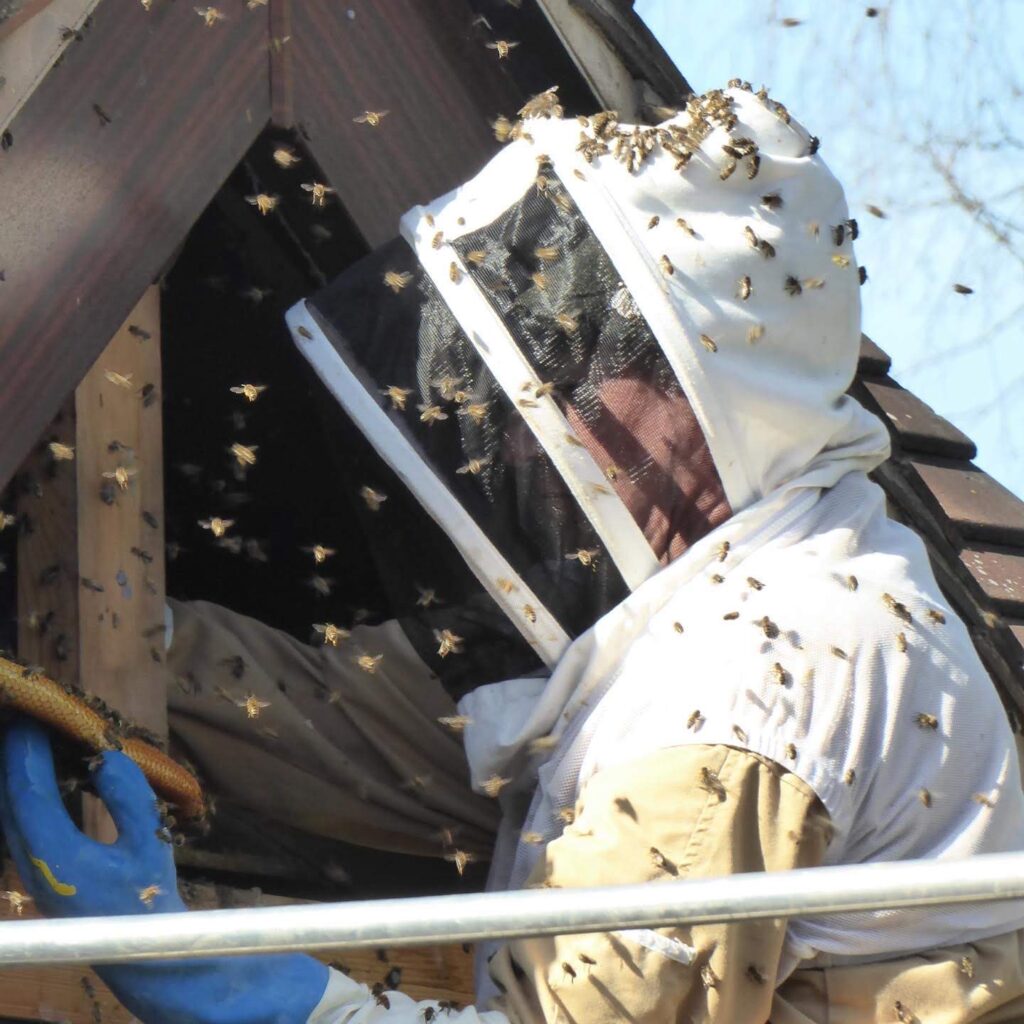
I once carried out a removal in a convent in the North West. I’d completed a survey and the thermal images from the survey showed the heat signature of the colony to be in the ceiling of the flat roof of the stairwell. Thankfully it was reachable from the landing, and should not have been too difficult. Other evidence the colony was in residence were signs of honey running down the wall on the first floor and honey dripping through the ceiling. The day ended up a little more complicated than I had hoped, some fourteen hours later I was still struggling with the colony, so much so that I had to call in for reinforcements from the company I was working for at the time. It took four of us a further two hours to clean up. There was nearly four hundred pounds of honey removed from that ceiling that day. It is still to this day the most difficult one I have ever had the pleasure to deal with, and I say pleasure because there is a great wealth of satisfaction when you have completed a successful removal; the same satisfaction of releasing that unfortunate bumble bee from under the Frisbee. The only sting I received was the one from the back of my father’s hand around my ear hole for being so foolish in the first place. It’s only over the last few years that I’ve come to realise that from that moment on everything I do, and have done, is all for the love of bees.
